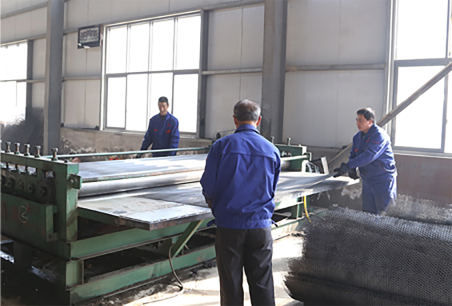Understanding Perforated Sheet Sizes A Comprehensive Guide
Perforated sheets, known for their unique designs and functional benefits, play a vital role in various industries, including construction, architecture, and manufacturing. The term perforated refers to the small holes that are evenly spaced across the surface of the sheet, and these openings can take various shapes and sizes. This article aims to explore the different perforated sheet sizes, their applications, and the factors to consider when selecting the right size for your needs.
What Are Perforated Sheets?
Perforated sheets are thin materials made from metals such as steel, aluminum, and copper, or from other materials like plastic. These sheets are featured with a pattern of holes, which can be round, square, slotted, or custom-shaped. The holes can vary in size, diameter, and spacing, making perforated sheets versatile for numerous applications.
Common Sizes of Perforated Sheets
When discussing perforated sheet sizes, several dimensions come into focus. These sheets typically come in standardized sizes like
- 4x8 feet (1220x2440 mm) This is one of the most common dimensions used in various industrial applications. The large surface area allows for multiple perforation patterns and is ideal for large projects. - 3x6 feet (910x1830 mm) This size is frequently used in smaller applications, providing flexibility while still being manageable for handling and installation. - 2x4 feet (610x1220 mm) A compact size that is often used for architectural features and interior design projects, where aesthetics and functionality are crucial. - Custom sizes Many manufacturers offer perforated sheets in custom dimensions to meet specific needs, which is beneficial for unique applications and designs.
Factors to Consider When Choosing Perforated Sheet Sizes
1. Application The intended use of the perforated sheet will greatly influence the size selection. For example, sheets used in industrial equipment might require larger dimensions compared to those used in decorative screens.
perforated sheet sizes

2. Material Thickness The thickness of the material can affect load-bearing capacity and durability. Thicker sheets can withstand physical stresses better, while thinner sheets may be more suitable for aesthetic applications.
3. Hole Size and Pattern Choose the hole size and spacing based on the specific requirements of your project. For example, larger holes are useful for ventilation and drainage, while smaller holes may be needed for filtration applications.
4. Aesthetic Considerations In architectural applications, the visual appearance of the perforated sheet is essential. Different patterns can create distinct looks, making it necessary to choose sizes that enhance design intent.
5. Weight and Handling Larger and thicker sheets can be heavier, so consider the ease of handling and installation. This is particularly important for projects that require frequent movement or repositioning of the sheets.
Applications of Perforated Sheets
Perforated sheets find their utility in a broad spectrum of applications. Some common uses include
- Architectural facades Enhancing building aesthetics while allowing natural light and airflow. - Filter media Used in various filtration and screening processes in industries such as water treatment and food processing. - Sound absorption panels Ideal for noise reduction in industrial settings or public spaces. - Walkways and platforms Providing slip resistance while allowing debris and liquids to fall through.
Conclusion
In summary, understanding perforated sheet sizes is crucial for ensuring optimal performance and aesthetics in your projects. By considering the application, material thickness, hole size and pattern, aesthetic needs, and handling requirements, you can choose the right perforated sheet for your specific needs. Whether in construction, manufacturing, or design, perforated sheets are an invaluable resource that combines functionality with visual appeal.
-
Turn Down the Noise: The Future of Highway Sound Barriers
NewsApr.09,2025
-
Silence the Sound: The Power of Highway Noise Barriers
NewsApr.09,2025
-
Reduce Road Noise Effectively with Highway Noise Barriers
NewsApr.09,2025
-
Noise-Free Living: How Highway Barriers Make a Difference
NewsApr.09,2025
-
Engineered for Silence: Highway Noise Barriers for Every Road
NewsApr.09,2025
-
Effective Noise Control: Highway Barriers for a Quieter Tomorrow
NewsApr.09,2025
Subscribe now!
Stay up to date with the latest on Fry Steeland industry news.

